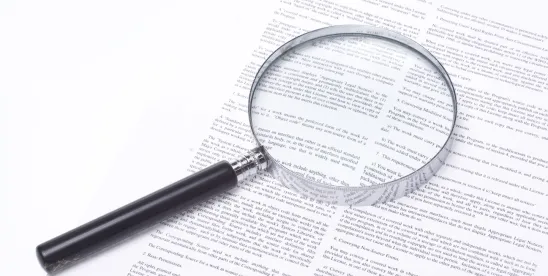Part 1 of this two-part series explored the five steps to consider before and at the start of any internal investigation.
The next five steps focus on conducting and concluding the investigation and will help guide a company during the actual investigation, after establishing its framework.
-
Gather Information. The investigator should: (a) assess the complaint itself; (b) gather relevant policies and documents; (c) confirm contractual requirements (if any); (d) interview the complainant to understand the complaint, its substance, relevant documents, and the identity of relevant witnesses; (e) gather and assess additional policies and documents (if any); and (f) interview other witnesses to fully understand their knowledge of events, including additional relevant documents and witnesses. Each witness should be advised of the company’s anti-retaliation policies and told to report any retaliation to the company. If the investigation is being conducted by outside counsel, each witness should be informed that counsel represents the company and not the witness, among other things. This is commonly referred to as an Upjohn warning.
-
Prepare findings and conclusions. Findings and conclusions can vary in form. An organization may dictate the charge of the investigator and whether it is requested that the investigator provide more than factual findings and in what format. An organization may choose an oral report, a written executive summary, or a detailed factual findings and analysis, depending on the circumstances. Any report should summarize the complaint, the information, interviews held and documents reviewed, and typically, the factual conclusions reached. It should be fact-based and generally devoid of legal analysis and opinions. At times, legal analysis might be requested by an organization and care should be taken to make certain such analysis is properly subject to attorney-client privilege and perhaps outside the fact-finding portion of the investigation.
-
Take remedial measures (if necessary). If the investigation uncovers errors, mistakes, or wrongdoing, the company should take reasonably appropriate steps to remedy those issues and to prevent their reoccurrence. This could be through discipline of employees (up to and including termination), policy changes, or additional training. It could also involve a report to a government agency about potential violations of law.
-
Follow-up with the complainant to close the investigation. This will build rapport and show the complainant that the company took her complaint seriously. In general, companies should explain that the investigation has been completed, that the company has taken appropriate action, and that the employee should continue to report any wrongdoing in the future. It should also include a reminder that retaliation is prohibited and if the employee experiences any retaliation, she should immediately report it.
-
Prepare the investigative file. The investigator should prepare a file of conclusions, notes, and documents reviewed in reaching its conclusion. Attorney-client privileged communications and materials should be maintained in a separate file.
These five steps, when combined with the five steps establishing the framework of an investigation, will help companies make appropriate decisions, understand internal areas of concern, build appropriate defenses, and minimize or mitigate risks.




 />i
/>i
